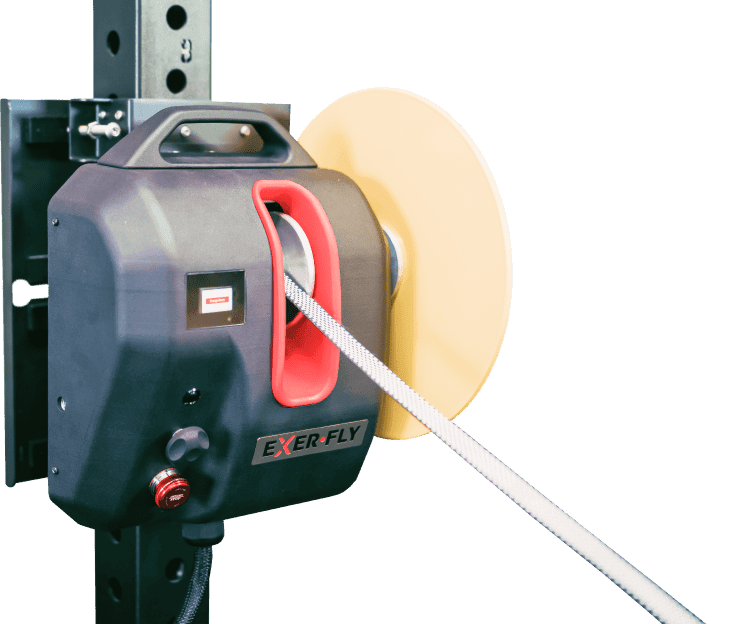
Reducing Hamstring Injury Risks in Sports with Eccentric Training
Understanding Muscle Injuries in Athletes
Muscle injuries among athletes are common and often occur during high-speed running, sprinting, and kicking actions. These injuries are responsible for time lost to competition and training. Hamstring muscle tears are frequent injuries in professional soccer representing on average 17% of all injuries (Bisciotti et.al. 2020). The severity of the issue ranges from delayed onset muscle soreness to a complete muscle tear. In soccer, the risk of a hamstring injury is 2.5 times greater than an injury to the quadriceps muscle group. A professional soccer team records on average a rate of 10 hamstring strain injuries per season, 90 days of time loss due to injury, averaging 15 to 21 games missed per season (Bisciotti et.al. 2020). The majority of research on hamstring injuries reports that hamstring muscles are most susceptible to injury during the late swing phase as a result of eccentric loading during the running gait cycle (Danielsson et.al. 2020).
The Role of the Stretch-Shortening Cycle (SSC)
The stretch-shortening cycle (SSC) is a primary biomechanical occurrence and denotes a coupled eccentric-concentric contraction. This type of movement is especially common in dynamic actions such as running, jumping, and change of direction in sports. Improving the SSC can enhance performance by maximizing the utilization of elastic energy and improving the efficiency of movements such as running. During the SSC, the hamstring muscles undergo rapid lengthening (eccentric contraction) followed by immediate shortening (concentric contraction), placing significant stress on the muscle-tendon unit. Research by Yu et.al. (2008) observed that the hamstring muscles endure eccentric contraction during the late stance phase as well as the late swing phase of overground sprinting and that hamstring muscles are more likely to sustain strain injuries during the late swing phase.
Eccentric Training for Injury Prevention
Training methods that emphasize eccentric loading, such as plyometrics and eccentric strength training, can enhance the SSC by improving muscle-tendon stiffness through increased force development and neuromuscular coordination (Kons et.al. 2023; de Villarreal, 2012). Researchers have explored the benefits of incorporating flywheel resistance training (FRT) and eccentric overload exercises in sports performance and injury prevention. FRT utilizes rotational inertia to provide resistance throughout a range of motion. By capitalizing on the eccentric overload that FRT is known for, muscle-lengthening FRT can enhance strength, neuromuscular control, and optimize tendon adaptation. These adaptations can be crucial for reducing the risk of hamstring injuries and enhancing athletic performance, especially in activities that rely heavily on the SSC, such as sprinting and explosive movements on the field or court.
Practical Applications of Flywheel Resistance Training
Additionally, exercises that incorporate rapid changes of direction (CoD) or velocity in the gym or on the training field can help athletes develop the efficiency of SSC during dynamic movements. At Crawley FC they routinely use FRT for chronic tissue exposure, minimal risk efforts on the flywheel that do not subject players to high velocity runs that could potentially be perilous. According to Beato et.al. (2021) during the season aim for two sessions per week of FRT. The first session should focus on strength development and injury prevention involving multiple sets 3 – 6 with high inertial loads >0.050 kg.m2 while subsequent flywheel sessions focus on power development with lower inertial loads 0.025 – 0.050 kg.m2 (Raya-Gonzalez et.al. 2021). Furthermore, when implementing flywheel into an exercise program, multi-joint exercises are recommended for strength and power development and single-joint exercises for injury prevention (Beato et.al. 2021).
Conclusion
In summary, hamstring strains represent a significant concern in sports involving high-speed running and kicking due to the demands placed on the muscles during the SSC. Understanding the biomechanical factors contributing to these injuries and implementing targeted interventions, such as FRT with eccentric overload, could aid in injury prevention and optimize athletic performance.
References
- Bisciotti, G.N., Chamari, K., Cena, E., Carimati, G., Bisciotti, A., Biscotti, A., Quaglia, A. and Volpi, P. (2020). Hamstring Injuries Prevention in Soccer: A Narrative Review of Current Literature. Published Online – Thieme Open Access. 115 (7): 115-126.
- Danielsson, A., Horvath, A., Senorski, C., Geli-Alentorn, E., Garrett, W.E., Cugat, R., Samuelsson, K. and Senorski, E.H. (2020) The Mechanism of Hamstring Injuries – A Systematic Review. BMC Musculoskeletal Disorders. 21: 1-21.
- Yu, B., Queen, R.M., Abbey, A.N., Liu Y., Moorman, C.T. and Garrett, W.E. (2008) Hamstring Muscle Kinematics and Activation During Overground Sprinting. Jnl of Biomech. 41 (15): 3121-3126.
- Kons, R.L., Orssatto, L.B.R, AcheDias, J., De Pauw, K., Meeusen, R.,Trajano, G.S., Dal Pupo, J. and Detanico, D. (2023) Effects of Plyometric Training on Physical Performance: An Umbrella Review. Sports Medicine-Open. 9 (4): 1-19.
- De Villarreal, E.S., Requena, B. and Cronin, J.B. (2012) The Effects of Plyometric Training on Sprint Performance: Ameta-Analysis. Journal of Strength & Conditioning Research. 26 (2): 575-584.
- Beato, M., Maroto-Izquierdo, S., Hernandez-Davo, J.L. and Raya-Gonzalez, J. (2021) Flywheel Training Periodization in Team Sports. Frontiers in Physiology. 12: 1-6.
- Raya-Gonzalez, J., Castillo, D. and Beato, M. (2021) The flywheel paradigm in team sports: A soccer approach. Strength Cond Jnl 43: 12–22.






